After a thunderstorm and heavy rain all night I was up very early this morning.It’s an hour’s drive from Krakow to Oswiecim (Auschwitz) but the only way you can get into the museum as an individual traveller at this time of year is before 10am,or after 3pm.Without a guide it’s free but because of numbers you have to book a timed entry online,and mine was 9-45.Leaving nothing to chance ,especially the Krakow rush hour,I left the campsite at 7am,but got there ridiculously early at 8-15.Fortunately I was able to change my ticket and get in immediately. Judging by the large numbers of coaches that started to arrive later ,it’s no bad thing to get there early anyway.Three campervans seemed to have spent the night in the museum carpark-a bit cheeky but a good tip.The weather suddenly brightened up as I arrived and it actually became very hot.
For those who have been to Auschwitz, excuse this part,but I will relate all.The Auschwitz memorial museum has two parts.Firstly,Auschwitz I.This was a Polish army barracks taken over by the Nazis when they occupied Poland.They started using it immediately for Polish political prisoners and detainees,and hostages taken as reprisal for attacks on Germans by the resistance,and gradually it began also to house ethnic groups the Nazis wanted to exterminate,such as Jews,Roma gypsys,and Russian POWs.The Nazis started experimenting with barbarity,conducting medical experiments,and trialling gassing.A large proportion of people were simply worked or starved to death .A horrible fact was stated that if you were not resourceful enough to find an extra food supply,you were dead of starvation and overwork in 3 months.Another board described how if a Polish prisoner escaped,their family was arrested and made to stand under a sign explaining the reason.They were kept in till you gave yourself up,at which point you could expect to be excecuted.The choices inherent in that!
The camp is relatively small(at least,by the standards of the second camp),and is made up of three rows of the 3 story brick-built Polish barrack blocks.It also features the infamous gateway with the motif Arbeit Macht Frei.The electrified barbed wire fence still exists
For those who have been to Auschwitz, excuse this part,but I will relate all.The Auschwitz memorial museum has two parts.Firstly,Auschwitz I.This was a Polish army barracks taken over by the Nazis when they occupied Poland.They started using it immediately for Polish political prisoners and detainees,and hostages taken as reprisal for attacks on Germans by the resistance,and gradually it began also to house ethnic groups the Nazis wanted to exterminate,such as Jews,Roma gypsys,and Russian POWs.The Nazis started experimenting with barbarity,conducting medical experiments,and trialling gassing.A large proportion of people were simply worked or starved to death .A horrible fact was stated that if you were not resourceful enough to find an extra food supply,you were dead of starvation and overwork in 3 months.Another board described how if a Polish prisoner escaped,their family was arrested and made to stand under a sign explaining the reason.They were kept in till you gave yourself up,at which point you could expect to be excecuted.The choices inherent in that!
The camp is relatively small(at least,by the standards of the second camp),and is made up of three rows of the 3 story brick-built Polish barrack blocks.It also features the infamous gateway with the motif Arbeit Macht Frei.The electrified barbed wire fence still exists
A large number of the buildings house museums,some showing the general conditions and horrors, others memorials to the dead of a specific nation.I knew to expect rooms with piles of belongings,mountains of shoes,spectacles,hairbrushes,combs,shaving brushes,prosthetic limbs,suitcases,all looted from the arrivees.What I found quite chilling was one block which in a dimly lit hall had a column made up of sets of striped prison clothes on frames,positioned as if marching in ranks,hunched over with exhaustion.It looked as if a column of ghosts were marching.All the exhibits were very well done,and there was much to read.Also unsettling were the rooms of family photographs taken from arriving prisoners all showing happy normal people on holiday,at weddings etc.
The camp purpose-built as an extermination camp is Birkenau,later known as Auschwitz II,which is 3km away from Auschwitz I.This is the place with the building with the gateway through which trainloads of prisoners passed,and which had the gas chambers .
You can walk straight in here with no ticket: it’s such a huge space. About 30% of the huts were brick built and still stand but the rest were wooden, and only one restored or preserved row remains.The remainder are marked by their concrete base and brick built chimney only,and the multitude of chimneys stand like sentinels over the vast complex.All the electrified wire and the watchtowers remain.There are no exhibits here,but one can enter some of the buildings and see the three-tier 6ft x 6ft wooden sleeping platforms.
The camp purpose-built as an extermination camp is Birkenau,later known as Auschwitz II,which is 3km away from Auschwitz I.This is the place with the building with the gateway through which trainloads of prisoners passed,and which had the gas chambers .
You can walk straight in here with no ticket: it’s such a huge space. About 30% of the huts were brick built and still stand but the rest were wooden, and only one restored or preserved row remains.The remainder are marked by their concrete base and brick built chimney only,and the multitude of chimneys stand like sentinels over the vast complex.All the electrified wire and the watchtowers remain.There are no exhibits here,but one can enter some of the buildings and see the three-tier 6ft x 6ft wooden sleeping platforms.
The horror of the place was really brought home to me by contemporary SS photographs of the camp posted on interpretation boards at the sites were they were taken,and as many of the buildings still stand it is easy to orientate oneself to such positions as where the infamous selections of arrivees for immediate death in the gas chambers,or slave labour , took place.,and now one can still tread the road from where the train would stand,to the remains of the gas chambers.
The Nazis blew up the gas chambers before the Russians arrived,so they are piles of rubble.The ponds where all the ashes from the crematoria were thrown still exist,and hauntingly are now full of happy frogs croaking among the buttercups.The camp is vast and it is shocking to see the infrastructure the Nazis were in the middle of putting in to extend the camp.It made me think that this is just one of many many such camps, some well known such as Dachau or ,Belsen,some less so such as Plaszow which I wrote about yesterday.And this was just one camp among many other camps in this area,housing slave labourers,and Allied POWs made to work etc. See the book “The Man who broke into Auschwitz” by Denis Avey for more on this.
When at the end of a quite a tiring walk around the camp I sat down to scoff a plate of food at the carpark café, with a view of that railway entrance building, eating a meal suddenly seemed inappropriate.
On a lighter note,while on the subject of food,I made an interesting observation yesterday.Of course in the UK now,many supermarkets have special shelves of Polish food.In a supermarket in Krakow I found chicken Tikka Masala,and chicken Jalfrezi on sale,so it seems returning Poles are bringing a curry habit home.
Leaving Auschwitz I re-joined the motoway and drove west towards Wroclaw.It was a tedious 2 hour drive through a rather dull landscape in the pouring rain, which had timed its return perfectly with my departure from the camp museums.There is one campsite in Wroclaw,at the Olympic stadium,built in the 1920s not for the Olympics but named that way simply to indicate a place of sporting prowess.It was of course renovated by the Nazis in 1934-39(In common with the whole western third of Poland,Wroclaw was actually part of Germany up until 1945,and was known as Breslau)Learning that Wroclaw’s one Unesco World Heritage site was just 20 minutes’ walk from the campsite,I set off to look at it,at the end of the afternoon.This is rather a strange treasure,the Centennial Hall(Hala Stulecia),a pioneering domed building built of re-inforced ferro-concrete in 1911-13.When it was built,as a recreational building,it was the largest dome ever built.Amazingly,the biggest before then was the Pantheon in Rome(AD126 !!).The Centennial Hall doubled that size ,hence the new technology of reinforced concrete by the German architect Max Berg was considered revolutionary.Next to it,also designed in 1913 in happier times,by a German count and a Japanese gardener,is a very attractive Japanese garden,with all the typical elements,arches,lake,flowing water,and masses of maples and rhododendrons
When at the end of a quite a tiring walk around the camp I sat down to scoff a plate of food at the carpark café, with a view of that railway entrance building, eating a meal suddenly seemed inappropriate.
On a lighter note,while on the subject of food,I made an interesting observation yesterday.Of course in the UK now,many supermarkets have special shelves of Polish food.In a supermarket in Krakow I found chicken Tikka Masala,and chicken Jalfrezi on sale,so it seems returning Poles are bringing a curry habit home.
Leaving Auschwitz I re-joined the motoway and drove west towards Wroclaw.It was a tedious 2 hour drive through a rather dull landscape in the pouring rain, which had timed its return perfectly with my departure from the camp museums.There is one campsite in Wroclaw,at the Olympic stadium,built in the 1920s not for the Olympics but named that way simply to indicate a place of sporting prowess.It was of course renovated by the Nazis in 1934-39(In common with the whole western third of Poland,Wroclaw was actually part of Germany up until 1945,and was known as Breslau)Learning that Wroclaw’s one Unesco World Heritage site was just 20 minutes’ walk from the campsite,I set off to look at it,at the end of the afternoon.This is rather a strange treasure,the Centennial Hall(Hala Stulecia),a pioneering domed building built of re-inforced ferro-concrete in 1911-13.When it was built,as a recreational building,it was the largest dome ever built.Amazingly,the biggest before then was the Pantheon in Rome(AD126 !!).The Centennial Hall doubled that size ,hence the new technology of reinforced concrete by the German architect Max Berg was considered revolutionary.Next to it,also designed in 1913 in happier times,by a German count and a Japanese gardener,is a very attractive Japanese garden,with all the typical elements,arches,lake,flowing water,and masses of maples and rhododendrons
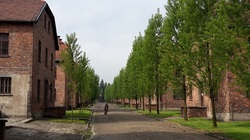
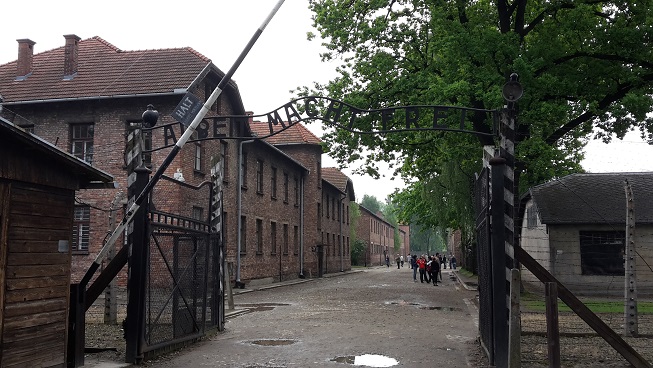
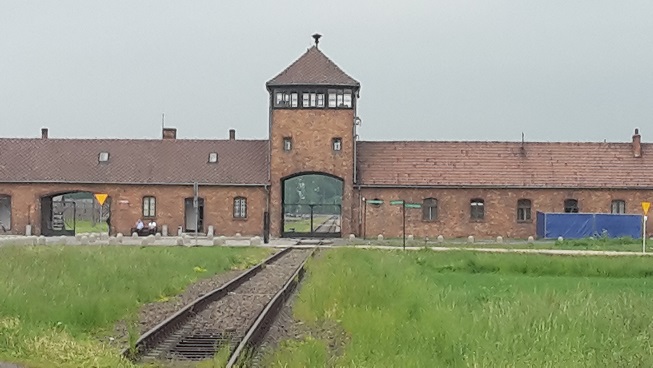
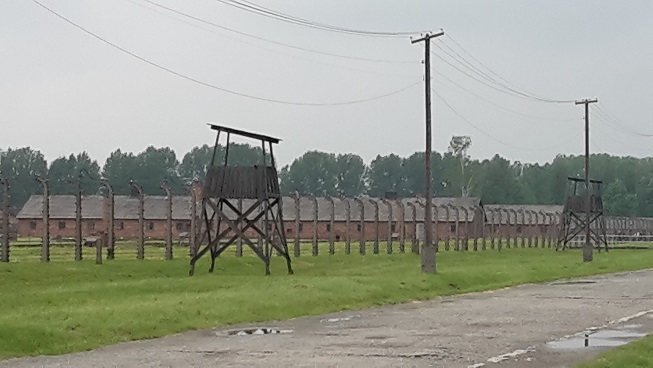
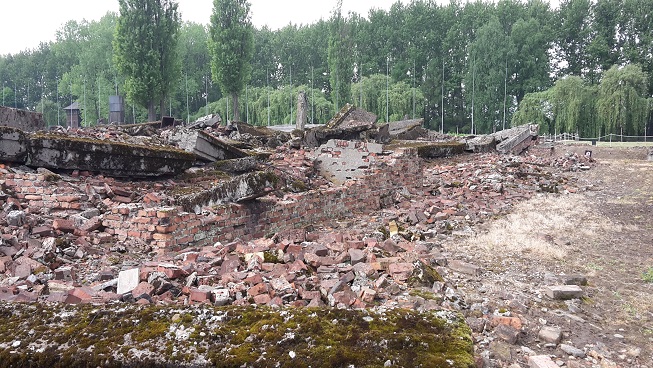
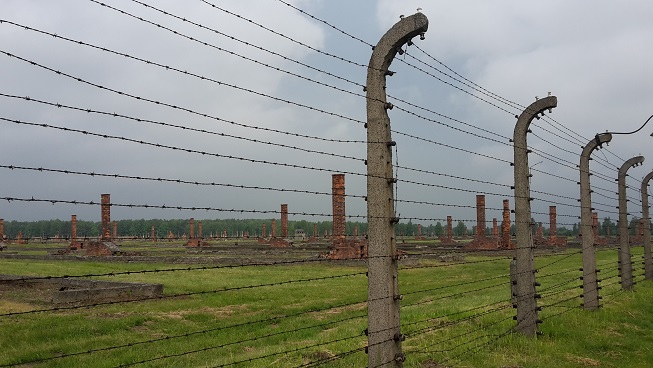
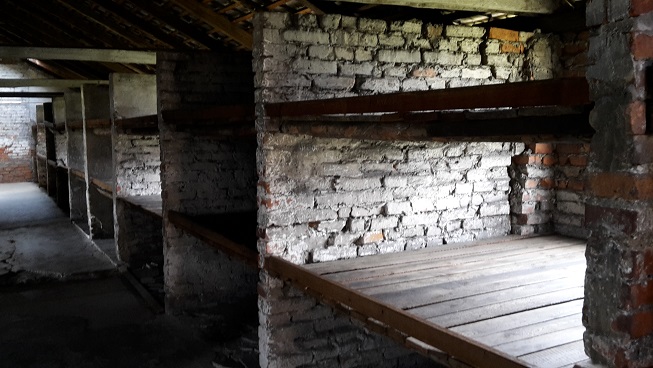
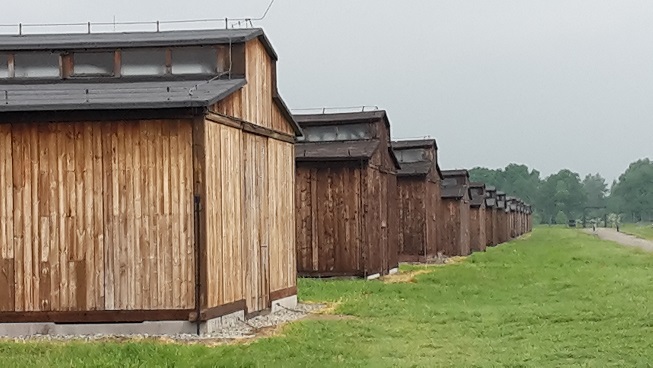

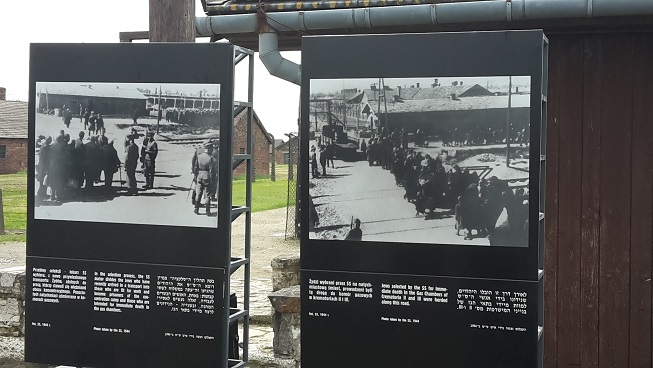
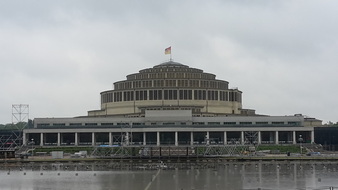
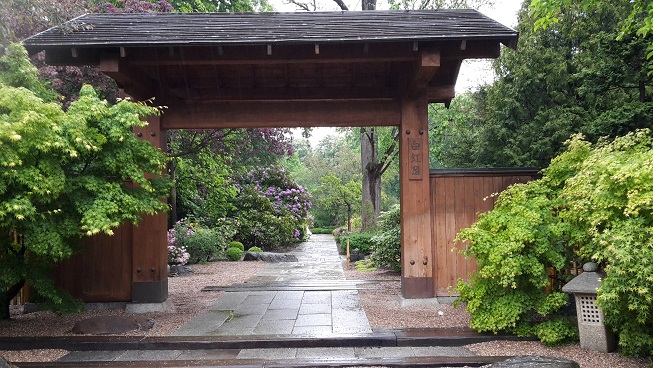

 RSS Feed
RSS Feed